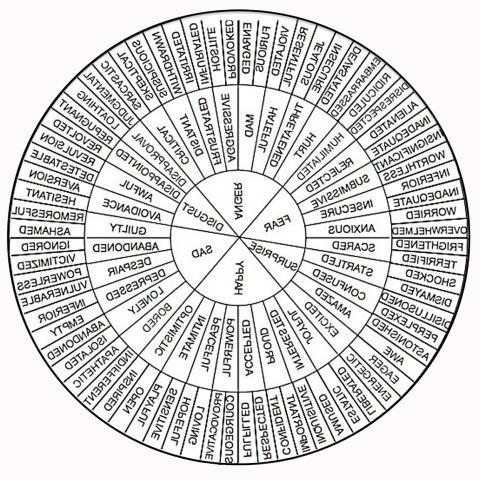Strong emotions can sometimes be difficult to handle and strong emotions that are not handled well often can lead to big problems. Many times we mislabel our underlying strong emotion as “ANGER.” It is vital to figure out what emotion or emotions one is feeling to be able to resolve a problem situation.
The following steps will help you handle painful emotions much more successfully:
- Dig deep enough to discover what “triggered” your strong emotion
- Usually underneath anger are other more hidden feelings
- Feelings oftentimes occur together and may be difficult to separate
- 处理这个问题, you need to know what exact feelings are going on for you at a particular moment
- “What am I feeling right now? When and where did this start?
- “What was going on at the time? 还有其他人参与了吗??”
Choose a strategy or strategies that will help you feel better:
- Talk with a close friend, family member, R.A., Hall Director, or counselor for emotional support
- Write out feelings and thoughts in a journal
- Use positive self-talk to get through the feelings
- Use distraction to take attention to something else
- Notice the feeling… and let it go
- Have a conversation with the person who was involved
- Remember that you are in charge of what you feel; no one can “make” you feel a certain way – you control yourself and your reactions
- Feelings can come and go quickly
- Let go of a bad mood quickly; hang on to a good mood for a long time
- Do something to cheer yourself up
- In your mind, forgive the person who made the hurtful comment
- Make yourself as resilient as possible
Directions for Using the 情绪轮 or Table
This tool is meant to expand your emotional awareness and sensitivity. It gives you language to identify and communicate about your emotions. We have provided the tool in two different chart formats, one in a table and one in a wheel diagram. It is used by starting with general terms in the top/center and working your way down the list/out to the perimeter to land on the most accurate descriptor of your emotional state.
The Table Version is divided into six columns. The most general emotional term is listed at the top of each column in bold (similar to the central circle above). The bullets below represent terms that would be more specific (the second circle in the wheel version). The dashes under the bullets represent even more precise terms (the outermost circle in the 情绪轮).
情绪表:
惊喜
|
恐惧
|
愤怒
|
厌恶
|
悲伤的
|
快乐
|
情绪轮
The Wheel is divided into three concentric circles- the innermost circle comprised of general emotional terms, the outermost comprised of more specific terms.
- Six basic emotions – “恐惧, 愤怒, 厌恶, 悲伤的, 快乐, 惊喜” – are listed in the center circle, and they are separated like slices of a pie.
- If you move out from the center to the second level, following the lines of the “pie slice,” you will find various forms of that emotion more specifically listed. 例如, if you start with “愤怒” in the center circle and then move to the next level, you find a range of adjectives that may describe anger more specifically: “伤害, 威胁, 可恶的, 疯了, 咄咄逼人的, 沮丧, 遥远的, 至关重要的.”
- If you move even further out within the expanding pie slice, you find even more adjectives to sharpen the distinction some more: “不好意思, 摧毁了, 不安全的, 嫉妒, 等.”
- In order to precisely identify your emotional states, you will need to pay attention to the subtle sensations in your body, 他们的质量, 位置及强度. 例如 you might notice the heat in your face, 你喉咙里的肿块, the tears welling in your eyes, 你手心的汗, 心率加快, 等.
- It is possible to have more than one emotion at the same time, so be willing to consider the full range you are experiencing.

